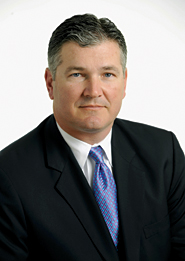Macquarie Capital USA might not yet be a household name in U.S. equities among institutional investors. But the firm appears to be moving at an accelerated pace to get there.
The Australian brokerage, Macquarie Group, launched its U.S. broker-dealer as an agency and research shop in November 2007. The strategy was to gradually roll out more execution and research services as it picked up business by making in-roads onto more buyside broker lists.
But as revenues outstripped expectations in its first year, the firm adjusted its schedule upward. Macquarie hired more traders and research staff as its client list grew and its research coverage increased. The U.S. broker-dealer also started committing capital in March. And it plans to debut its program trading capabilities in the third quarter, said Austin Graham, head of U.S. equities trading.

“What started off as a bolt-on business in the U.S.–that was content/research-driven–has now escalated into full-service,” Graham said. “But what we hoped was going to be an agency-only, pay-for-research model has morphed into sectorized trading.”
Macquarie’s history of trading in the U.S. goes back 12 years. Up until recently, though, the firm was mostly known to U.S. institutions for brokering Australian and Asian stocks, according to Greg Coleman, head of U.S. equities sales and trading.
The U.S. launch fit Macquarie’s plan for a wholly global execution and research business. Accordingly, Macquarie started a European broker-dealer in London that trails its U.S. cousin’s roll out by about six months, Coleman said.
Market trends unwittingly helped the firm boost its level of talent for the build out of its New York beachhead. The U.S. broker-dealer picked up many traders and research pros from firms that were broadsided or sunk by the economic downturn: Bear Stearns, Lehman Brothers, Bank of America, Merrill Lynch. Graham, himself, joined after almost 20 years of equity sales and trading experience at Lehman.
“That window of opportunity was open, and we ran through it,” he said.
Macquarie now has 13 sales traders and four sector traders. The firm plans to add another sector trader and two more sales traders, Coleman said. On the research side, the firm has 15 research sales people, with plans to expand to 20.
Macquarie’s broker-dealer offers its mix of long-only and hedge fund customers an execution service that is all high-touch, Graham said. The firm doesn’t offer a direct market access product or an algo product to clients at this time, he added.
“Nobody pays Macquarie’s execution in the U.S. without talking to a sales trader right now,” Graham said.
That, however, should change. Ultimately, the U.S. and European businesses will grow and transform into the model of products and services Macquarie offers in Asia, which includes low touch, Graham said.

For research, Macquarie now covers 270 companies in the U.S. It wants to expand the number up to 450, Coleman said. Globally, Macquarie writes research for more than 1,700 companies, he said. It also offers corporate access, he added, with road shows in every region across America.
Some on the buyside have noticed. A senior trader for a large, global asset manager said the U.S. branch has been making waves on the research front.
“They’ve been moving up the ranks on people’s research lists,” he said. “They have a pretty robust research product. They were nowhere on our research list. All of a sudden they moved up big time. I imagine that’s probably the case with other firms.”
The same trader said Graham’s hire gave Macquarie a leg up on the recruiting trail. “Austin has a really good reputation,” he said. “Macquarie hired some pretty good sales traders and traders.”
Macquarie’s U.S. client list has also grown. It snapped up the U.S. account base it had acquired from its Asia and Australia brokering business, Graham said. Adding U.S. research helped increase those numbers.
“Because we’re now producing U.S. research, I would say our client base has grown 30 percent from the original, existing Macquarie account base,” Graham said.
Macquarie’s growth has been significant. In its first year, the U.S. branch saw revenue growth in excess of twice what it anticipated, Coleman said. For this year, he added, the U.S. branch looks for business to triple.
Macquarie was founded in 1969. It has more than 70 office locations in 26 countries and employs about 12,700 people. Its stock trades on the Australian Securities Exchange.
According to its annual report–for the year ending on March 31–Macquarie saw an overall profit of $605 million. Macquarie reported annual revenues of $5.28 billion. Of that figure, its global institutional and retail cash equities group comprised $792 million–or 15 percent of total revenue.




